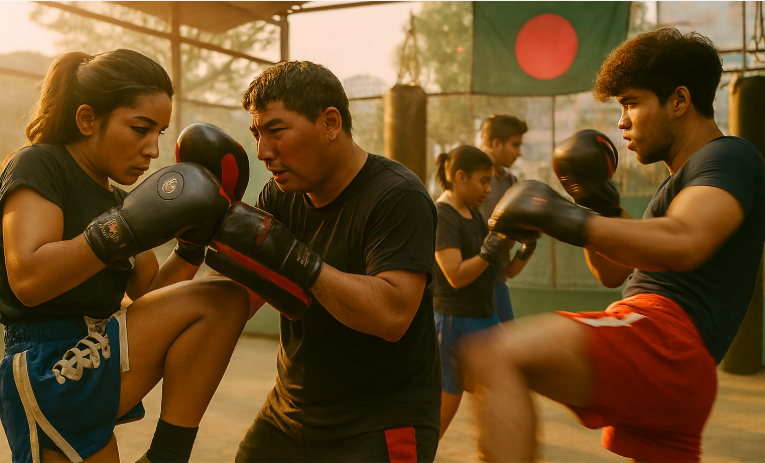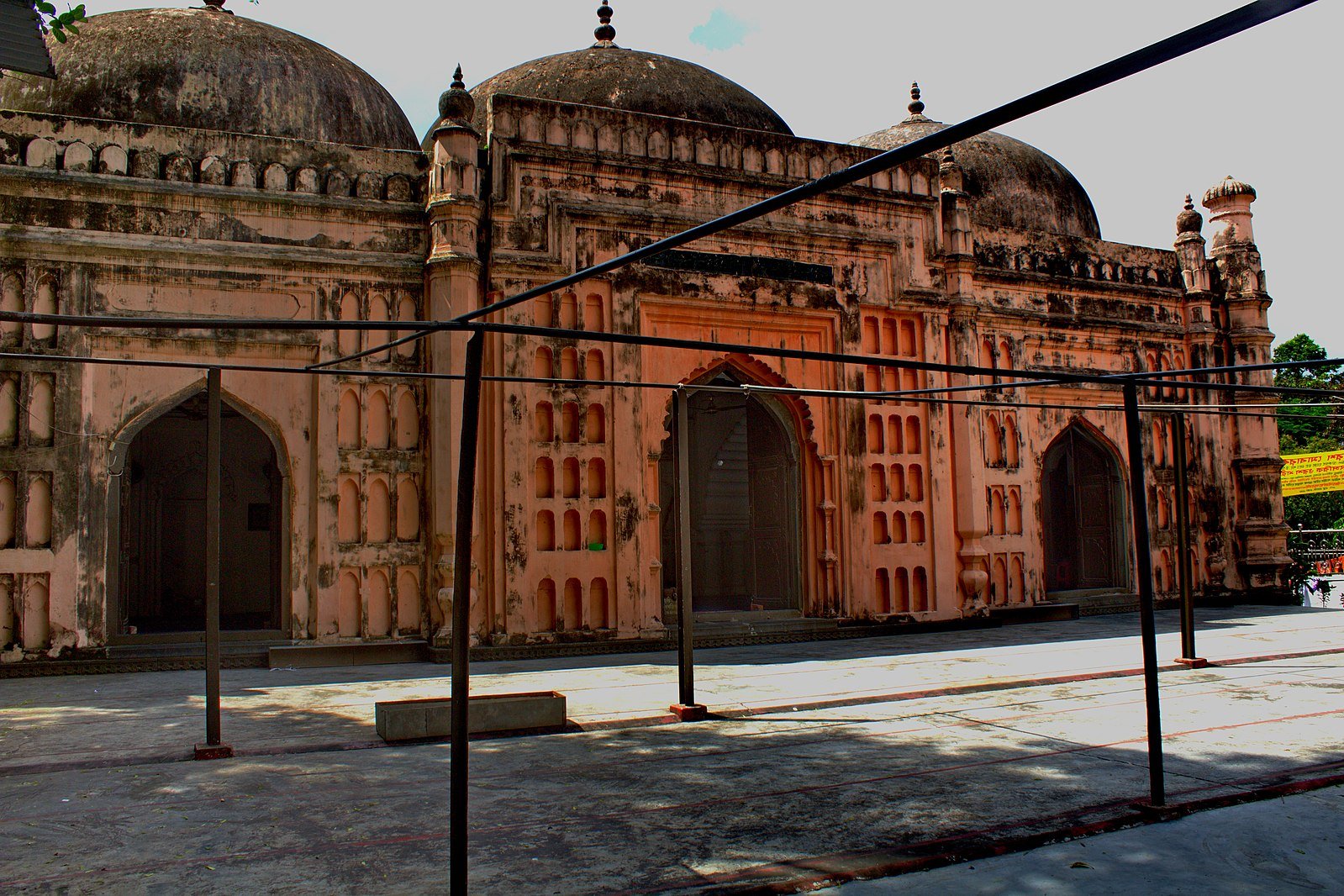Muay Thai in Dhaka: The Rise of Fitness and Fight Culture

The Rise of Muay Thai in Dhaka
In recent years, Muay Thai has surged in popularity across Dhaka, shifting from a niche combat sport to a mainstream fitness regime and a pathway to professional ring fights. Once overshadowed by traditional martial arts and boxing, Muay Thai is now becoming a movement — gyms scattered around the capital are offering classes, fighters are emerging, and enthusiasts are embracing its discipline.
The Shift in Dhaka’s Combat Landscape
A few years ago, combat sports in Bangladesh were largely confined to boxing, Taekwondo, and traditional martial arts. Few gyms dared to offer MMA or Muay Thai classes, and those that did struggled to attract students. But as global interest in mixed martial arts and striking disciplines increases, Dhaka’s fitness culture has evolved. Muay Thai — known for its powerful use of fists, elbows, knees, and shins — is now seen not only as a path to competition, but a holistic approach to fitness, self-defense, and personal transformation.
Events like Double Horse Knockouts, Xcel Boxing Championship, and Khar Nights have exposed Bangladeshis to the spectacle, drawing eyes to what Muay Thai can offer. Gyms that once focused solely on cardio, weights, or general combat arts are adding Muay Thai classes to satisfy growing demand.
Gyms Leading the Charge
One gym at the forefront of this change is Legacy MMA in Dhanmondi. Its coach and owner, Shadman Sakif, returned from training abroad with a vision: to elevate Muay Thai standards in Dhaka. He now runs classes three days a week, with a focus on maintaining international quality. Sakif often speaks about how local gyms used to lack proper infrastructure and standards, and his mission is to transform that.
Another notable space is Tapout Fitness in Gulshan. Run by a professional athlete who has represented Bangladesh internationally, instructs many working professionals and fitness seekers. His classes emphasize strength, endurance, and discipline rather than only preparing for fights. Many students at Tapout come from non-combat backgrounds — they are here to lose weight, gain confidence, and build resilience.
More Than Just Fighting — Fitness & Transformation
What makes Muay Thai unique is that even if one never steps into a ring, the training delivers tangible benefits. It’s rigorous, combining cardio, strength, balance, agility, and mental focus. Trainers instruct students on quality sleep, diet, consistent training, and recovery — making Muay Thai a lifestyle, not merely a workout.
Many students say Muay Thai empowers them. One student shared that limited resources once prevented him from pursuing boxing in youth; now he trains Muay Thai to fight obesity and as a long-forgotten dream. For others, self-defense is a draw.
Women and girls are increasingly joining the sport too. Parents are enrolling daughters, and kids as young as 11 are learning the techniques. The confidence, fitness, and discipline that Muay Thai builds make it appealing across age and gender lines and most importantly for self-defense.
The Road to Prizefighting
Though many students train primarily for fitness, there is a growing subset who want to compete. Bangladesh is beginning to see Muay Thai fighters emerge from these gyms, aiming for regional and international bouts. Events like Double Horse Knockouts 001 have helped build a local stage for these aspirants.
Coaches say that to reach the prizefighting level, students must excel in technique, conditioning, and mindset. It takes years of discipline and gradual progression — starting with basics, sparring, and ring strategy. The infrastructure is young, but it is growing.
Challenges in the Muay Thai Journey
Growth is not without obstacles. Many gyms operate on a limited budget, lacking advanced equipment or recovery facilities. Some students drop off due to intensity, injuries, or time constraints. Also, the regulation and support for combat sports are still limited in Bangladesh.
Access can also be a barrier: high costs, travel distance, and schedule conflict deter some potential learners. Ensuring clean environments, trained coaches, safety protocols, and injury management is another concern for gyms trying to establish trust.
The Broader Impact: Culture, Fitness & Identity
The rise of Muay Thai in Dhaka is more than just a trend — it is reshaping how people view fitness, perseverance, and personal power. As gyms offer more inclusive training, the combat sport barrier dissolves: a software engineer, a housewife, a student — all can train in Muay Thai based on will, not past experience.
Moreover, this rise contributes to national pride in combat sports. As more Bangladeshi fighters appear in regional matchups, the name of Bangladesh in Muay Thai circuits may grow. The discipline also promotes mental resilience, discipline, humility, and respect — qualities that echo beyond the gym.
Futures & Possibilities
Looking ahead, the future of Muay Thai in Bangladesh is bright. More gyms will likely emerge, classes will expand, and competitive circuits will become more frequent. Support from federations, sponsorships, and media coverage could accelerate growth. With better regulation and coaching standards, Bangladesh might produce internationally competitive Muay Thai athletes.
If gyms invest in better facilities, recovery infrastructure, and coach education, Muay Thai could become a mainstay in Dhaka’s fitness and sports ecosystem — not as a fringe pursuit, but as a respected discipline.







